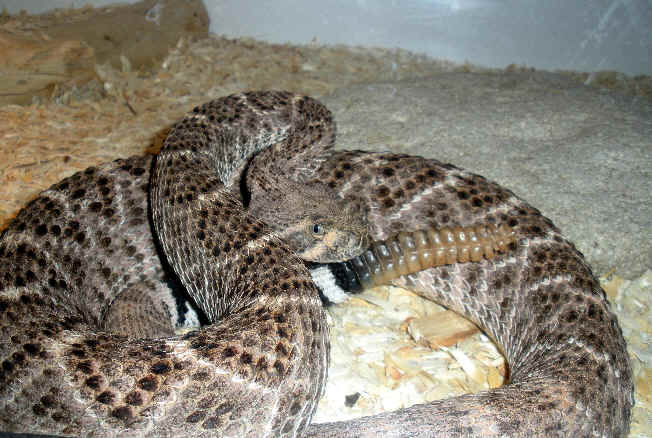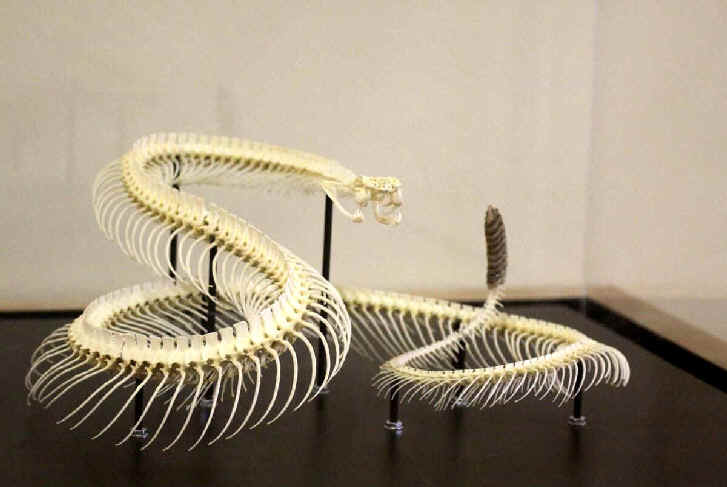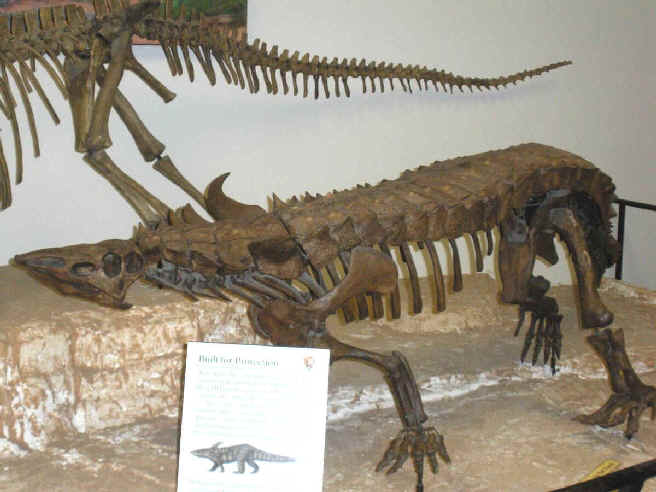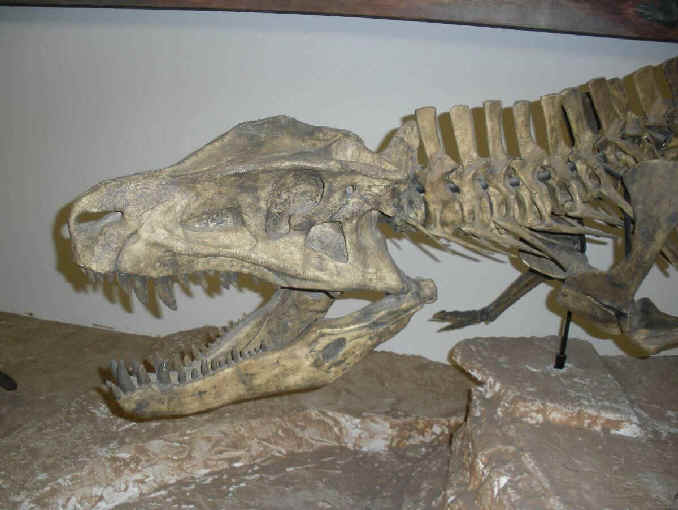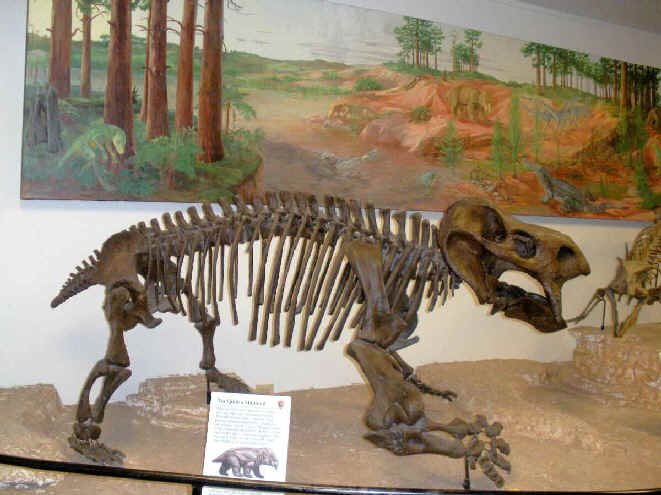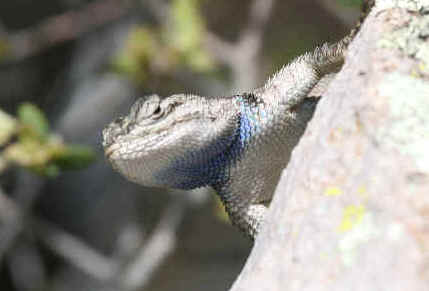 Amphibians
and Reptiles
Amphibians
and Reptiles
of ARIZONA
Noting those during Focus On Nature Tours
with an (*)
including:
Salamanders Toads & Frogs
Turtles Lizards
Snakes
A list of Amphibians and Reptiles of
Arizona
compiled by Armas Hill
UPPER RIGHT PHOTO: a DESERT SPINY LIZARD, photographed during a FONT tour
Codes:
(AZi): introduced in Arizona
(t): a threatened species
CM: occurs (or has occurred) in the area of the Chiricahua Mountains
in southeast Arizona
GC: occurs (or has occurred) in the area of the Grand Canyon in
northern Arizona
Link:
Prehistoric Amphibians & Reptiles in Arizona (Dinosaurs & Others)
Other Links:
Upcoming FONT Birding & Nature Tours in Arizona
A List & Photo Gallery of Arizona Birds, in 2 parts:
Part #1: Quails to Becard Part #2: Flycatchers to Buntings
Mammals in Arizona
(with
some photos)
Butterflies in
Arizona (with some photos)

List:
AMPHIBIANS:
Salamanders:
- Tiger Salamander ______ CM GC
Ambystoma mavortium
Ambystoma m. mavortium "Barred Tiger Salamander"
______ (generally occur south of the Salt & Gila Rivers)
Ambystoma mavortium nebulosum "Arizona Tiger
Salamander" ______ GC
Ambystoma mavortium stebbinsi "Sonoran Tiger
Salamander" ______
The "Sonoran Tiger Salamander" in Arizona is found
only in the San Rafael Valley and on adjacent slopes of the Huachuca and
Patagonia mountains in eastern Santa Cruz and southwestern Cochise
Counties.
It is listed as endangered.
Toads & Frogs:
- Couch's Spadefoot Toad ______ CM
Scaphiopus couchi
- Mexican Spadefoot Toad ______ CM
Spea multiplicat
- Plains Spadefoot Toad ______ CM
Spea bombifrons
- Great Basin Spadefoot Toad ______
GC
Spea intermontana
- Green Toad ______ CM
Bufo debilis
- Sonoran Green Toad ______
Bufo retiformis
- Red-spotted Toad (*) ______ CM GC
Bufo punctatus
- Arizona Toad ______
Bufo microscaphus
- Woodhouse's Toad (*) ______
GC
Bufo woodhousi
- Great Plains Toad ______ CM GC
Bufo cognatus
- Sonoran Desert Toad (*) ______ CM
Bufo alvarius
- Great Plains
Narrow-mouthed Toad ______
Gastrophyryne olivacea
- Barking Frog ______
Craugastor augusti
- Lowland Burrowing
Treefrog ______
Smilisca fodiens
- Canyon Treefrog ______ CM
GC
Hyla arenicolor
- Arizona Treefrog ______
Hyla wrightorum
- Pacific Treefrog (AZi) ______
Pseudacris regilla
- Western Chorus Frog ______
Pseudacris triseriata
- Northern Leopard Frog ______ GC
Rana pipiens
- Plains Leopard Frog ______
CM
Rana blairi
- Relict Leopard Frog ______ (once thought to be extinct,
this imperiled frog was rediscovered in 1991)
Rana onca
- Lowland Leopard Frog ______
Rana yavapaiensis
- Chiracahua Leopard Frog (*)
______ CM
Rana chiricahuensis
- Tarahumara Frog ______
Rana tarahumarae
- American Bullfrog (AZi) (*)
______ CM
Rana catesbeiana
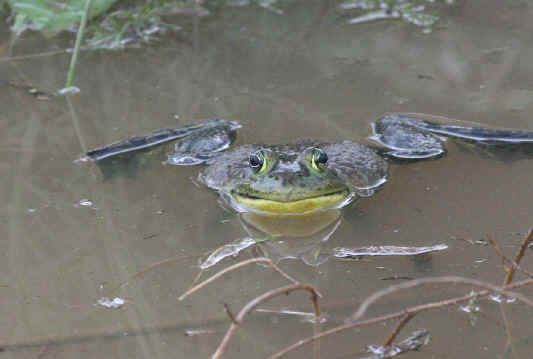
An American Bullfrog photographed during a FONT Arizona tour
REPTILES:
Turtles:
- Western Box Turtle (*) ______ CM GC
(another name is Ornate Box Turtle)
Terrapene ornata
Terrapene ornata luteola (subspecies in Arizona is the
"Desert
Box Turtle")
- Painted Turtle ______
Chrysemys picta
- Painted Slider (AZi) ______ (another
name is Pond Slider)
Trachemys scripta
- Arizona Mud Turtle ______
Kinosternon arizonense
- Yellow Mud Turtle ______
Kinosternon flavescens
- Sonora Mud Turtle ______ CM
Kinosternon sonoriense
- Shiny Softshell (AZi) ______
Apalone spinifera
- Desert Tortoise (t) (*) ______ GC
Gopherus agassiziii
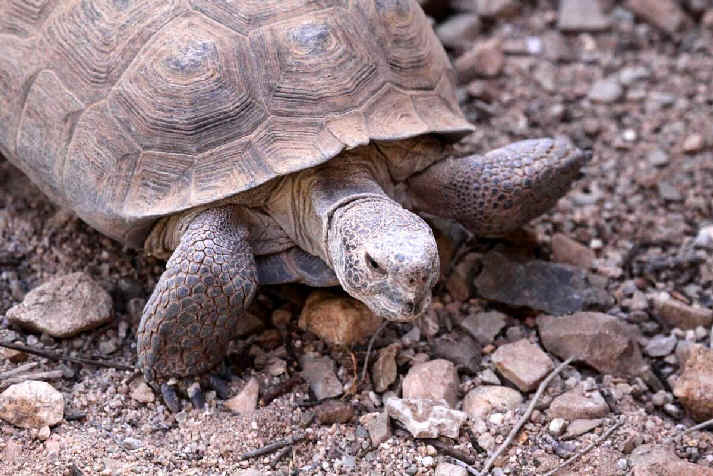
Desert Tortoise
(photo by Marie Gardner)
Lizards:
- Desert Iguana ______ GC
Dipsosaurus dorsalis
- Common Chuckwalla ______ GC
Sauromalus ater
Sauromalus ater obsesus "Western" Chuckwalla
______ GC
- Eastern Collared Lizard ______ GC
Crotaphytus collaris
- Great Basin Collared Lizard
______ GC
Crotaphytus bicinctores
- Sonoran Collared Lizard ______
Crotaphytus nebrius
- Long-nosed Leopard Lizard ______
GC
Gambelia wislizenii
- Zebra-tailed Lizard ______ CM GC
Callisaurrus draconoides
- Greater Earless Lizard (*) ______
CM
Cophosaurus texanus

A female Greater Earless Lizard photographed
during the FONT tour in Arizona in 2008
(photo by Doris Potter)
- Common Lesser Earless Lizard ______
CM GC
Holbrookia maculata
- Elegant Earless Lizard ______
Holbrookia elegans
- Yuman Desert Fringe-toed Lizard
______
Uma rufopunctata
- Mohave Fringe-toed Lizard ______
Uma scoparia
- Long-tailed Brush Lizard ______
Urosaurus graciosus
- Ornate Tree Lizard ______
Urosaurus ornatus
Urosaurus ornatus wrighti "Cliff Tree Lizard"
______ GC
- Common Side-blotched Lizard (*)
______
Uta stansburiana
Uta s. stansburiana "Northern Side-blotched
Lizard" ______ GC
Uta stansburiana stejnegeri "Desert Side-blotched
Lizard" ______ GC
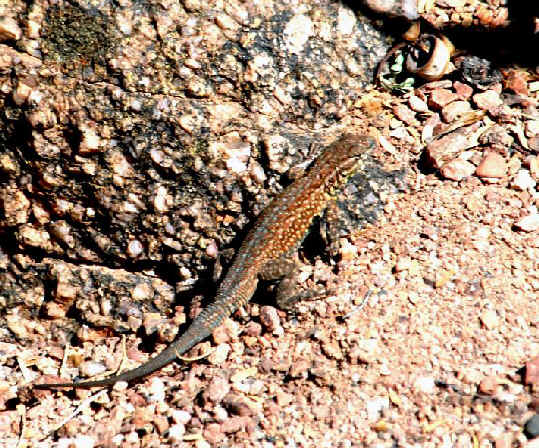
Common Side-blotched Lizard
(photo by Howard Eskin)
- Slevin's Bunchgrass Lizard ______
Sceloporus slevini
- Striped Plateau Lizard ______
Sceloporus virgatus
- Plateau Fence Lizard (*) ______
CM GC
Sceloporus tristichus
Sceloporus t. tristichus "Southern Plateau Fence
Lizard" _____ GC
Sceloporus tristichus elongatus "Northern Plateau Fence
Lizard" ______
GC
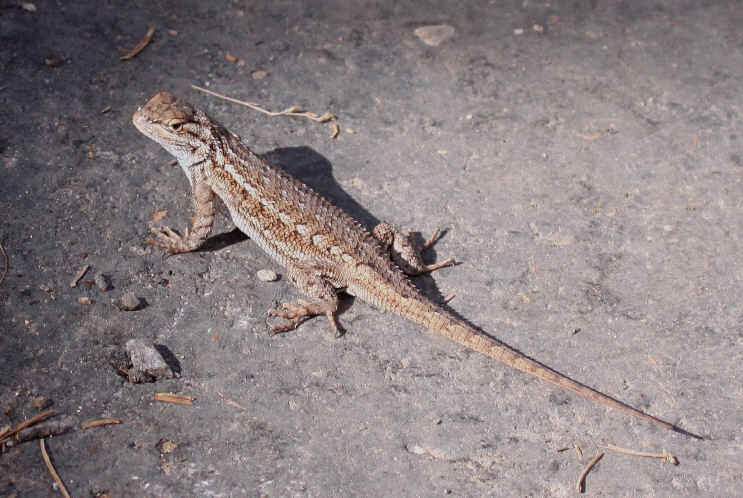
A Plateau Fence Lizard photographed during a FONT
Arizona tour
at the Grand Canyon in August 2010
(photo by Marie Gardner)
- Southwestern Fence Lizard ______
Sceloporus cowlesi
- Desert Spiny Lizard (*) ______ CM GC
Sceloporus magister

A Desert Spiny Lizard, with its blue-green throat,
photographed during a FONT tour in Arizona
- Clark's Spiny Lizard ______ CM
Sceloporus clarkii
- Yarrow's
(or Mountain) Spiny Lizard (*) ______
CM
Sceloporus jarrovii
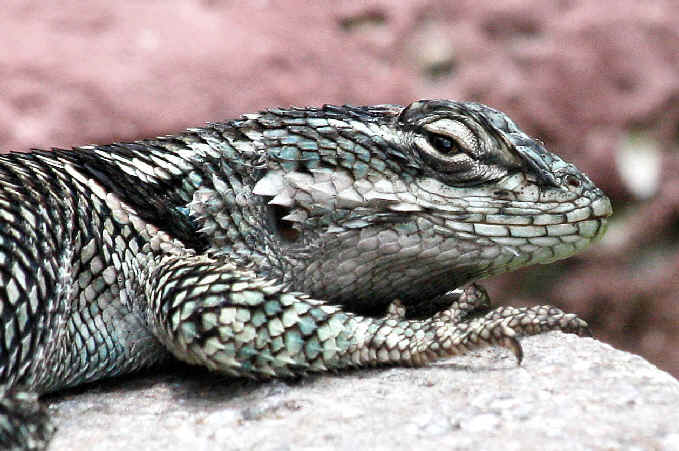
A Yarrow's Spiny Lizard photographed during a FONT tour in Arizona in 2008
(photo by Doris Potter)
- Twin-spotted Spiny Lizard ______
Sceloporus bimaculosus
- Yellow-backed Spiny Lizard ______
Sceloporus uniformis
- Common Sagebrush Lizard
______ GC
Sceloporus g. graciosus
- Texas Horned Lizard ______
Phrynosoma cornatum
- Desert Horned Lizard ______
Phrynosoma platyrhinos
Phrynosoma platyrhinos calidarum "Southern Desert Horned
Lizard" ______
GC
- Flat-tailed Horned Lizard ______
Phrynosoma mcallii
- Regal Horned Lizard ______
Phrynosoma solare
- Greater Short-horned Lizard (or
Short-horned Lizard) ______ GC
Phrynosoma hernandesi
- Round-tailed Horned Lizard ______
Phrynosoma modestum
- Goode's Horned Lizard ______
Phrynosoma goodei
- Desert Night Lizard ______ GC
Xantusia v. vigilis
- Arizona Night Lizard ______ GC
Xantusia arizonae
- Bezy's Night Lizard ______
Xantusia bezyi
- Chihuahuan Spotted Whiptail ______
Aspidoscelis exsanguis
- Gila Spotted Whiptail ______
Aspidoscelis flagellicauda
- Sonoran Spotted Whiptail ______
Aspidoscelis sonorae
- Desert Grassland Whiptail ______
Aspidoscelis uniparens
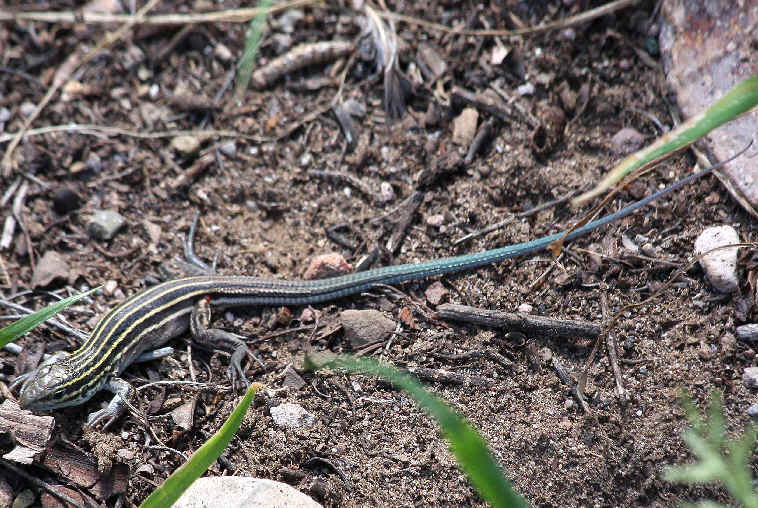
A Desert Grassland Whiptail photographed during the
FONT tour in Arizona in 2008
(photo by Doris Potter)
- Plateau Striped Whiptail ______
Aspidoscelis velox
- Arizona Striped Whiptail ______
Aspidoscelis arizonae
- Pai Striped Whiptail ______
Aspidoscelis pai
- Red-backed Whiptail ______
Aspidoscelis xanthonota
- Canyon Spotted Whiptail ______
Aspidoscelis burti
- Tiger Whiptail ______
Aspidoscelis tigris
Aspidoscelis
(or Cnemidophorus) tigris septentrionalis
"Northern Whiptail" ______
GC
- New Mexico Whiptail
______
Aspidoscelis neomexicana
- Variable (Southern Many-lined) Skink
______ GC
Eumeces multivirgatus epipleurotus
- Western Skink ______ GC
(another name is Great Basin
Skink)
Eumeces skiltonianus utahensis
- Mountain Skink ______
Eumeces callicephalus
- Gilbert's Skink ______
Eumeces gilberti
- Great Plains Skink ______
Eumaces obsoletus
- Madrean Alligator Lizard ______
Elgaria kingii
- Western Banded Gecko ______ CM
Coleonyx variegatus
Coleonyx v. variegatus "Desert Banded Gecko"
______ GC
Coleonyx variegatus utahensis "Utah Banded
Gecko" ______ GC
- Mediterranean House Gecko (AZi)
______
Hemidactylus turcicus
- Gila Monster ______
Heloderma suspectum
Heloderma suspectum cinctum "Banded Gila
Monster" ______
GC
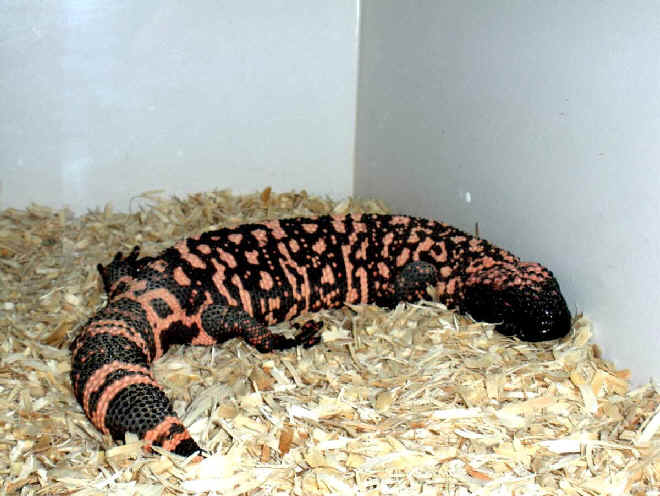
Gila Monster
(photo by Marie Gardner)
Snakes:
- New Mexico Threadsnake ______
Leptotyphlops dissectuse
- Western Threadsnake ______ CM GC
(also called Southwestern Blind Snake)
Leptotyphlops humilis
Leptotyphlops h. humilis ______ GC
- Rosy Boa ______
Lichanura trivirgata
In Arizona, there are 2 forms of the Rosy Boa, that might be separate
species:
Desert Rosy Boa ______ (with rusty orange to brown
stripes)
Mexican Rosy Boa ______ (with dark chocolate or black stripes)
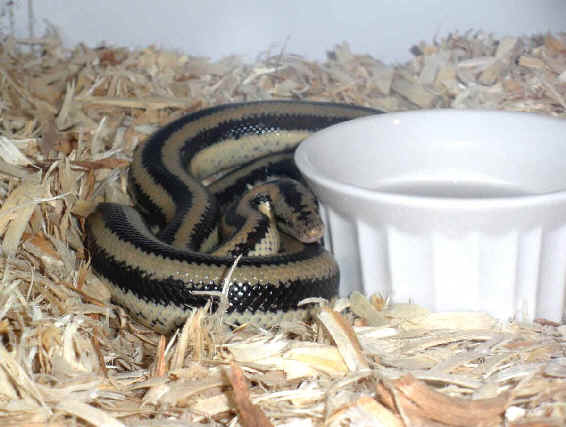
Mexican Rosy Boa
(photo by Marie Gardner)
- Sonoran Coralsnake ______
Micruroides euryxanthus
- Sonoran Shovel-nosed Snake ______
Chionactis palarostris
- Western Shovel-nosed Snake ______
Chionactis occiipitalis
- Variable Sandsnake ______
Chilomeniscus stramineus
- Groundsnake ______
(coloration & markings are extremely variable)
Sonora semiannulata
- Plains Black-headed Snake ______
Tantilla nigriceps
- Smith's Black-headed Snake ______
Tantilla hobartsmithi
- Yaqui Black-headed Snake (*) ______
Tantilla yaquia
- Chihuahuan Black-headed Snake ______
Tantilla wilcoxi
- Ring-necked Snake ______
Diadophis punctatus
- Desert Nightsnake ______ GC
Hypsigiena chlorophaea
(formerly part of Hypsiglena torquata)
- Chihuahuan Nightsnake ______ GC(east)
Hypsigiena jani (formerly Hypsigiena torquata ochrorhyncha)
"Spotted Night
Snake"
- Hooded Nightsnake ______ (in
southeast Arizona, occurs in part of Cochise County, Santa Cruz, &
southeast Pima County, from 3,000 to 8,500 feet above sea level)
Hypsiglena sp. (a newly-described species, in 2008, not yet with a
scientific name)
- Sonoran Lyresnake ______
GC (formerly "Western Lyresnake", Trimorphodon
biscutatus)
(There are populations, possibly isolated, in the lower Grand Canyon,
and in the Black Mountains in Mohave Co & the Kofa Mountains in Yuma
Co.)
Trimorphodon lambda
The Sonoran Lyresnake apparently hybridizes with the Chihuahuan
Lyresnake, Trimorphodon vilkinsonii, of southwest New
Mexico.
- Gophersnake (*) ______
Pituophis catenifer
Pituophis catenifer affinis "Sonoran Gopher
Snake" ______ GC
Pituophis catenifer deserticola "Great Basin Gopher
Snake" ______
GC
- Glossy Snake ______
Arizona elegans
Arizona elegans eburnata "Desert Glossy Snake"
______
Arizona elegans noctivaga "Arizona Glossy Snake"
______
Arizona elegans philipi "Painted Desert Glossy
Snake" ______
- Spotted Leaf-nosed Snake ______
Phyllorhynchus decurtatus
- Saddled Leaf-nosed Snake ______
Phyllorhynchus browni
- Mexican Hog-nosed Snake ______ (was part of Western Hog-nosed Snake,
Heterodon nasicus)
Heterodon kennerlyi
- Chihuahuan Hook-nosed Snake ______
Gyalopion canum
- Thornscrub Hook-nosed Snake ______
Gyalopion quadrangulare
- Brown Vinesnake ______
Oxybelis aeneus
- Eastern Patch-nosed Snake ______
Salvadora grahamiae
- Western Patch-nosed Snake ______
Salvadora hexalepis
Salvadora hexalepis mojavensis "Mojave Patch-nosed
Snake" ______ GC
- Green Ratsnake ______
Senticolis triaspis
- Sonoran Whipsnake ______ CM
Coluber
(formerly Masticophis) bilneatus


 Amphibians
and Reptiles
Amphibians
and Reptiles ![]()










